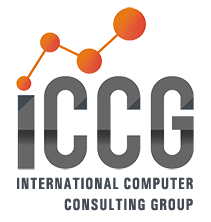The manufacturing industry has witnessed extraordinary changes over the past 250 years, with enterprises more recently transitioning to the Industry 4.0 paradigm. Industry 4.0 addresses the challenges of the modern world with autonomous systems, smart technology, machine learning, and an agile operations model.
This transition to automation has inspired sweeping changes in asset management and maintenance as well. Manufacturers looking to gain a competitive edge and create a more resilient infrastructure have begun adopting the doctrine of Industry 4.0 in tandem with upgrades of their maintenance efforts that embrace the human side of technology and empower employees to reach new levels of productivity.
Promote better maintenance and customer service outcomes
The right cloud enterprise asset management (EAM) software can revolutionize maintenance operations and support teams through increased safety and efficiency. When companies shift their focus from overhead to delivering optimal value for the customer, the employee, and their operations, a well-thought-out maintenance strategy can become a competitive differentiator.
Cloud EAM enables data-driven decisions and collaboration while reducing complexities and integrating with legacy systems. The technology-enabled automation and intelligence create a safer and more informed work environment for teams, who can focus on getting more done, safely, with minimal risk of unexpected asset failure.
Organizations that have adopted cloud EAM software have reported up to 20% improvement in workforce productivity, and 5-10% increase in equipment and mechanical system performance. EAM addresses the front lines of operations, promoting resilience from the inside out. When assets operate as expected, manufacturers can deliver reliable service and focus on building stronger relationships with customers.
The future of innovation and EAM
Modern EAM systems leverage the latest automation and machine learning technology to propel productivity, efficiency, and mobility. Many come with mobile capabilities that empower workers by providing more autonomy and enabling them to accomplish more work in less time—with work orders, specifications, safety information, maps, diagrams, and more at their fingertips, where they work. A modern EAM system also eliminates data silos and keeps lines of communication open between assets, managers, and field workers.
Integrated EAM systems can identify risks and offer recommendations on how to address and remediate potential machine failure. Through other advanced tools like leveraging the Internet of Things (IoT), smart devices, and embedded intelligence, EAM software can provide granular detail on asset condition, location, and performance to automate repairs and transmit critical data in real time.
Deploying a modern EAM system can transform operations and help manufacturers avoid expensive downtime and productivity losses while keeping assets operating optimally. The benefits aren’t limited to technology, though. The true competitive advantage lies within the harmonic collaboration between humans and machines.
And, as always, contact ICCG to help provide you with insight and information. Schedule a complimentary consultation to review your questions.


